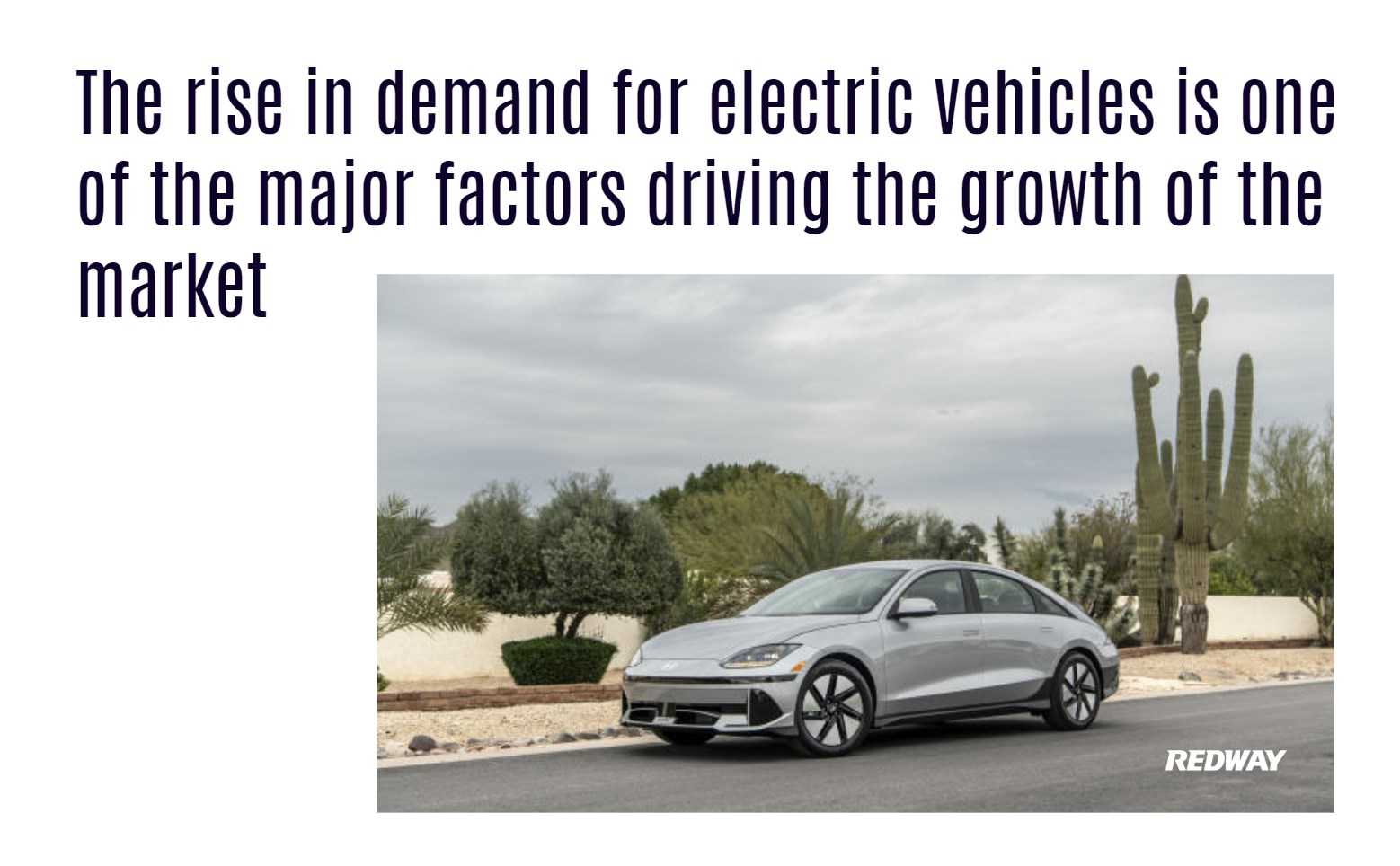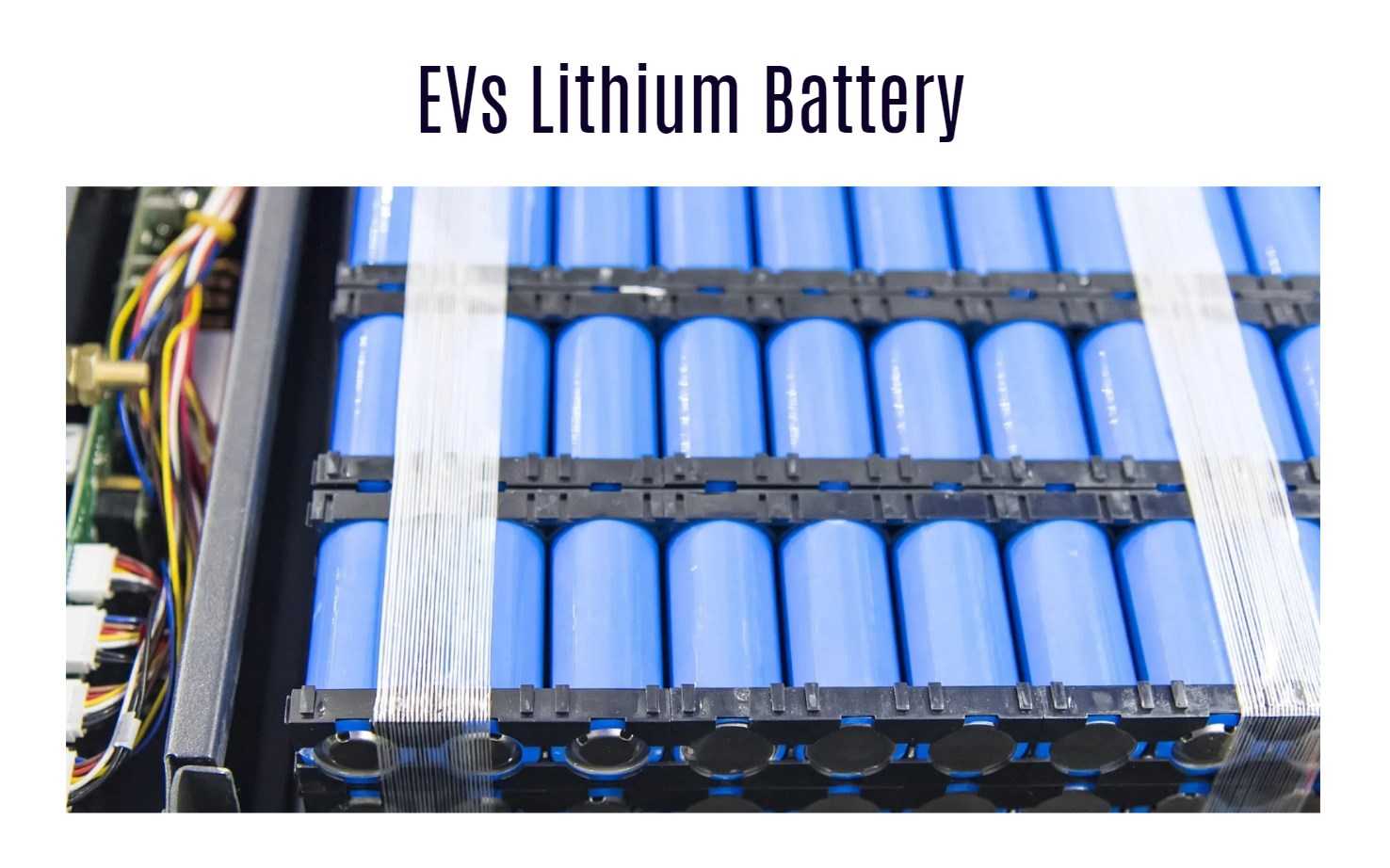-
Rising Demand for Electric Vehicles: The transition towards sustainable transportation and the need for powerful and efficient batteries in electric vehicles are major drivers for the lithium-ion battery market. As the adoption of electric vehicles increases worldwide, the demand for advanced lithium-ion batteries capable of handling high power demands while remaining compact and lightweight is also growing.
-
Increasing Use of Portable Consumer Electronics: The widespread use of smartphones, tablets, laptops, and other electronic devices is another significant driver for the lithium-ion battery market. Consumers are seeking gadgets with better performance and extended battery life, and lithium-ion batteries offer high energy density and long-lasting performance. Technological advancements have made it possible to produce smaller and more efficient lithium-ion batteries, meeting the growing demand for faster charging times and reduced downtime.
The global lithium ion battery market is expected to grow at a CAGR of xx% during the forecast period
The global lithium ion battery market is poised for impressive growth in the coming years, with a CAGR that reflects its increasing importance and relevance. This trend is being driven by several key factors that are reshaping the energy storage landscape.
-
Rising Demand for Electric Vehicles: The global shift towards sustainable transportation and the need for high-performance batteries in electric vehicles are key drivers for the growth of the lithium-ion battery market. As the adoption of electric vehicles continues to rise, the demand for advanced lithium-ion batteries capable of delivering optimal performance while remaining compact and lightweight is also increasing.
-
Increasing Use of Portable Consumer Electronics: The widespread use of smartphones, tablets, laptops, and other electronic devices is another significant driver for the lithium-ion battery market. Consumers are seeking devices with better performance and extended battery life, driving the demand for lithium-ion batteries. Technological advancements have made it possible to produce smaller and more efficient lithium-ion batteries, meeting the growing need for faster charging times and reduced downtime.
The rise in demand for electric vehicles is one of the major factors driving the growth of the market
-
Increasing Consumer Demand: The rise in demand for electric vehicles can be attributed to increasing consumer awareness of the environmental impact of traditional gasoline-powered vehicles. Consumers are now actively seeking more sustainable transportation options and are opting for electric vehicles as a greener alternative.
-
Investments in Electric Vehicle Technology: Automakers are investing heavily in electric vehicle technology to meet the rising demand. They are introducing new models with improved features and performance to cater to the evolving needs of consumers. These advancements in technology are making electric vehicles more appealing and accessible to a wider range of consumers.
-
Expansion of Charging Infrastructure: To support the growing number of electric vehicles on the road, there is a need for a robust charging infrastructure. The expansion of charging stations and the development of fast-charging technologies are making it more convenient for electric vehicle owners to charge their vehicles, addressing one of the key concerns of potential buyers.
The increasing use of portable consumer electronics is another factor that is contributing to the growth of the market
-
Convenience and Portability: The increasing use of portable consumer electronics can be attributed to their convenience and portability. Smartphones, for example, enable us to stay connected, access information, and perform various tasks on the go. Laptops and tablets provide the flexibility to work or entertain ourselves from anywhere, without the need for a fixed workstation. The compact size and lightweight nature of these devices make them easy to carry, enhancing their usability and appeal.
-
Connectivity and Communication: Portable consumer electronics have revolutionized communication and connectivity. With smartphones and wearable devices, we can easily connect with others through calls, messages, and social media platforms. These devices enable seamless communication and keep us connected to the digital world, allowing us to stay updated, share experiences, and engage with others effortlessly.
-
Advancements in Technology: The continuous advancements in technology have played a vital role in driving the growth of portable consumer electronics. Manufacturers are constantly innovating and introducing new features, improved performance, and enhanced user experiences. These advancements have made portable devices more powerful, efficient, and user-friendly, attracting a broader range of consumers and driving market growth.
The high cost of lithium ion batteries is one of the major restraints for the market
-
Factors Influencing Battery Costs: The cost of lithium-ion batteries is influenced by various factors, including raw material prices, manufacturing processes, and economies of scale. Fluctuations in raw material prices, such as lithium and cobalt, can impact the overall cost of battery production. Additionally, the complexity of manufacturing processes and the scale of production can affect the cost per unit.
-
Technological Advancements: Advancements in battery technology play a crucial role in reducing the cost of lithium-ion batteries. Innovations in materials, cell design, and manufacturing techniques can lead to more efficient and cost-effective battery production. This includes the development of alternative materials, such as solid-state electrolytes, that can potentially lower costs and improve performance.
-
Economies of Scale: Increasing the scale of battery production can contribute to cost reductions. As production volumes increase, economies of scale come into play, leading to lower per-unit costs. This can be achieved through investments in battery manufacturing facilities and partnerships between automakers and battery suppliers to drive mass production.
Some of the key players operating in the market
To sum up, the lithium ion battery market is expected to witness significant growth during the forecast period due to the increasing demand for electric vehicles and portable consumer electronics. Despite the high cost of lithium ion batteries being a major restraint for the market, technological advancements and innovation are helping to drive down costs.
Wholesale lithium golf cart batteries with 10-year life? Check here.
In addition, several key players operating in this market are investing heavily in research and development to introduce new products that can cater to evolving customer needs. These players include LG Chem Ltd., Panasonic Corporation, Samsung SDI Co. Ltd., Tesla Inc., Toshiba Corporation, BYD Company Limited, GS Yuasa International Ltd., Hitachi Chemical Co. Ltd., Johnson Controls International Plc, and Saft Groupe SA.
It is evident that the future of the lithium-ion battery market looks promising as it continues to gain popularity across various industries worldwide. With more investments pouring into R&D efforts aimed at improving performance while reducing production costs even further, we can expect continued growth with exciting developments on the horizon.
Want OEM lithium forklift batteries at wholesale prices? Check here.








